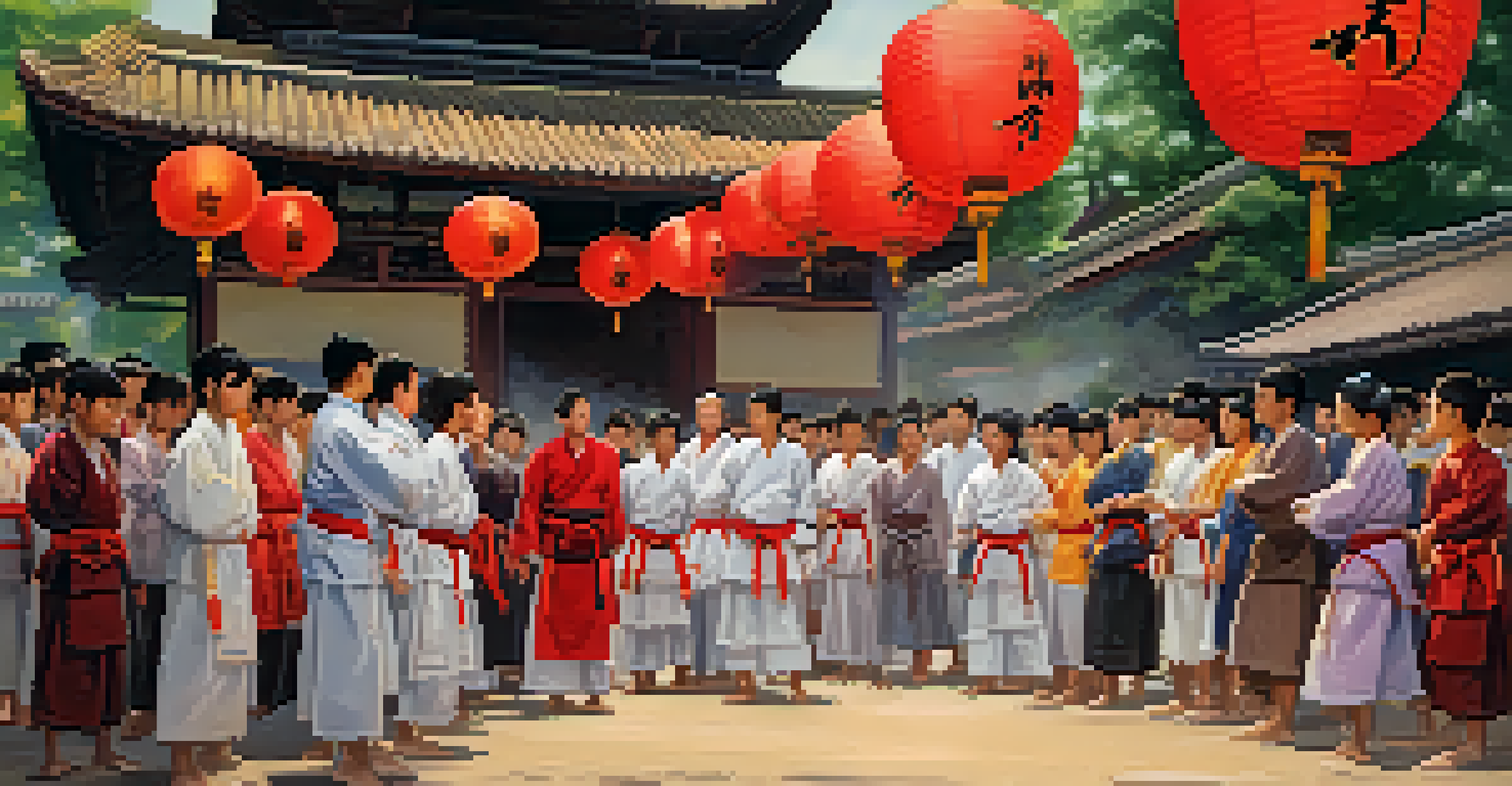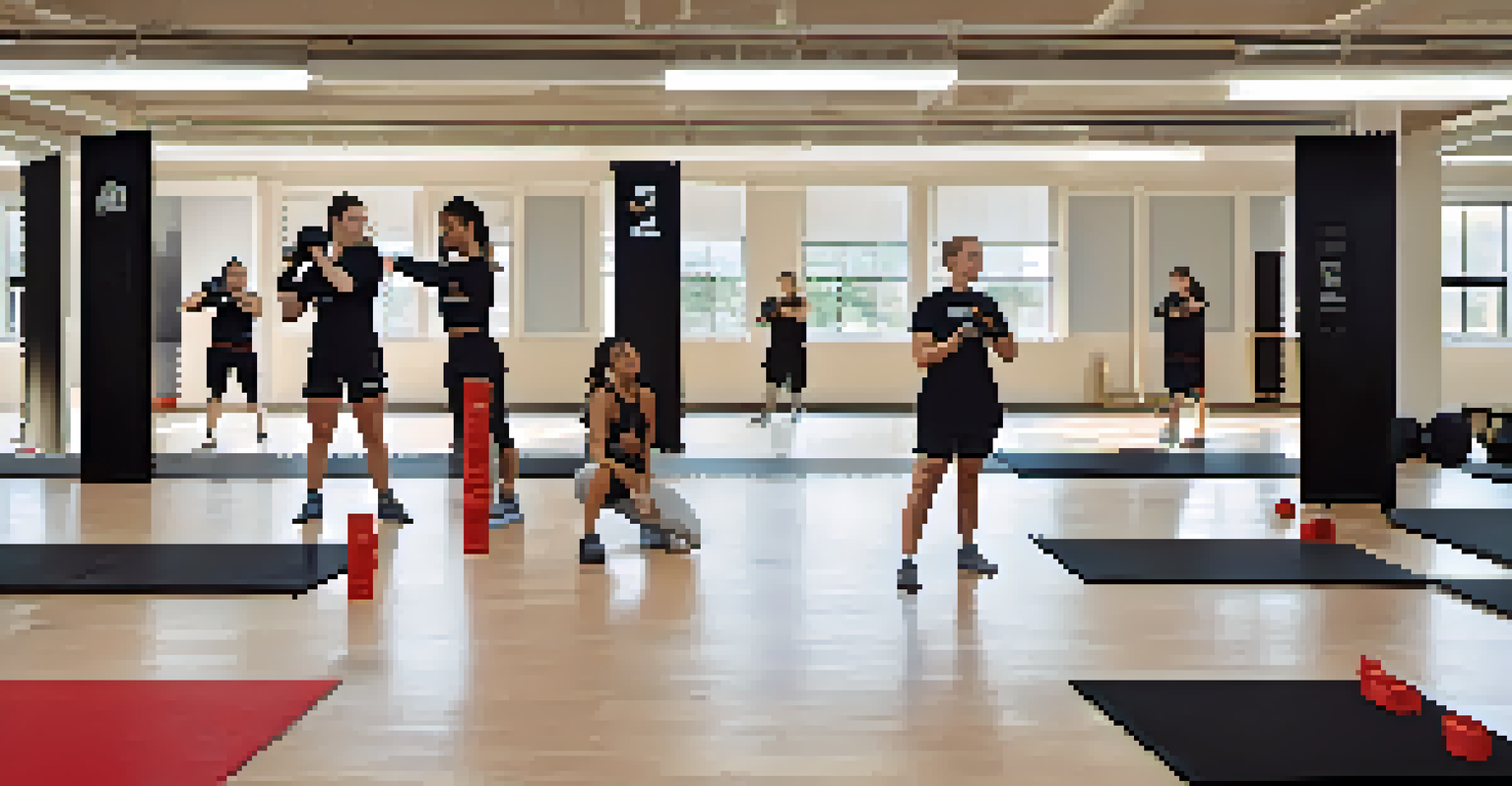Cultural Attitudes Towards Self Defense in Asian Societies

Historical Context of Self Defense in Asian Societies
Self-defense practices in Asia have deep historical roots that vary widely across cultures. For instance, martial arts like Kung Fu in China or Karate in Japan were developed not only for self-defense but also for spiritual and philosophical growth. This historical significance shapes modern attitudes, with many viewing self-defense as an art form rather than just a practical skill.
The greatest weapon against stress is our ability to choose one thought over another.
Additionally, the historical narratives of conflict and war in various Asian countries have influenced how communities perceive self-defense. In societies with a history of colonization or conflict, self-defense may be associated with resistance and empowerment. Consequently, the desire to protect oneself and one’s community is often imbued with cultural pride and resilience.
However, this historical context also leads to differing attitudes; in some cultures, self-defense may be frowned upon as promoting violence. This duality creates a complex landscape where cultural pride in martial arts coexists with a desire for peace and non-violence.
Influence of Religion on Self Defense Views
Religion plays a crucial role in shaping attitudes towards self-defense across Asian societies. For example, in Buddhist cultures, the principle of non-violence is paramount, leading many practitioners to opt for peaceful resolution over confrontation. This can lead to a cultural belief that self-defense is an undesirable last resort.

Conversely, in societies where martial traditions are intertwined with religious practices, such as in certain Filipino communities, self-defense is often seen as a necessary skill for survival and protection. Here, the teachings of faith may emphasize the importance of defending oneself and one's family, creating a more favorable view of self-defense practices.
Cultural Roots Shape Self-Defense
Self-defense practices in Asia are deeply influenced by historical, cultural, and spiritual contexts, leading to diverse attitudes towards its practice.
Ultimately, the interplay between religion and self-defense means that cultural attitudes can vary widely even within a single country, reflecting the diverse beliefs and practices of its population.
Gender Perspectives on Self Defense in Asia
Gender dynamics significantly influence cultural attitudes towards self-defense in Asian societies. In many cultures, traditional gender roles may discourage women from engaging in self-defense training, viewing it as a masculine domain. However, recent shifts toward gender equality have led to a growing acceptance of women participating in martial arts and self-defense classes.
Self-defense is not just a right, it's a responsibility.
Moreover, self-defense training is increasingly seen as empowering for women, providing them with skills to protect themselves in a world that can often feel unsafe. This empowerment narrative resonates with many women, leading to a rise in female-oriented self-defense programs across Asia, which not only teach skills but also foster confidence.
On the other hand, some regions still grapple with societal norms that stigmatize women taking self-defense classes, seeing it as an admission of vulnerability. Thus, the conversation around gender and self-defense remains complex and evolving.
Modern Influences on Self Defense Practices
In the contemporary landscape, globalization and the internet have introduced new perspectives on self-defense. The proliferation of online self-defense resources, tutorials, and communities has made it easier for individuals across Asia to learn and discuss self-defense techniques. This accessibility has sparked interest, particularly among younger generations who may not have had traditional martial arts training.
Furthermore, global events, such as increased crime rates or social unrest, have heightened awareness around personal safety. As a result, individuals in various Asian countries are increasingly seeking self-defense training as a proactive measure to protect themselves, regardless of cultural norms.
Religion Influences Self-Defense Views
Religious beliefs significantly affect perceptions of self-defense, with some cultures emphasizing non-violence while others see it as a necessary skill.
This blending of traditional practices with modern influences creates a unique tapestry of self-defense attitudes, where ancient martial arts coexist with contemporary self-defense strategies.
Cultural Events and Self Defense Awareness
Cultural events, festivals, and exhibitions often play a pivotal role in promoting self-defense awareness across Asia. For example, events showcasing martial arts performances not only celebrate cultural heritage but also highlight the importance of self-defense training. Such occasions allow communities to engage with these practices in a festive and supportive environment.
Additionally, workshops and seminars held during these events often provide practical self-defense training, making it accessible to the public. This hands-on approach demystifies self-defense techniques and encourages participation among individuals who may have been hesitant to engage in more formal training.
By integrating self-defense awareness into cultural celebrations, communities foster a more profound respect for these practices, blending tradition with education and empowerment.
Legal Perspectives on Self Defense Across Asia
Legal frameworks regarding self-defense vary significantly across Asian countries, influencing cultural attitudes toward its practice. In some nations, the laws surrounding self-defense are quite lenient, allowing individuals to protect themselves without severe repercussions. This legal backing can encourage a culture of self-defense, where people feel empowered to act in self-protection.
Conversely, in countries with stricter laws regarding violence, individuals may be hesitant to engage in self-defense practices due to fear of legal consequences. This creates a cultural perception that self-defense is not only risky but potentially unlawful, discouraging training and preparedness.
Modern Trends Transform Self-Defense
Globalization and the internet have made self-defense training more accessible, particularly among younger generations, combining traditional practices with contemporary needs.
Understanding these legal nuances is crucial for anyone interested in self-defense, as it shapes both individual behavior and societal attitudes toward the practice.
The Future of Self Defense in Asian Societies
As societies in Asia continue to evolve, so too do the cultural attitudes towards self-defense. With rising awareness around personal safety and empowerment, it is likely that more individuals will seek self-defense training, leading to a greater appreciation for these practices. This shift may be further propelled by the ongoing discussions surrounding gender equality and individual rights.
Moreover, the integration of technology in self-defense training, such as virtual classes and apps, is expected to broaden access and appeal, especially among younger audiences. This modern approach may help demystify self-defense, making it more relatable and attainable for everyone.

Ultimately, the future of self-defense in Asian societies looks promising, as more individuals recognize its importance not just as a skill, but as a means of empowerment and personal safety.